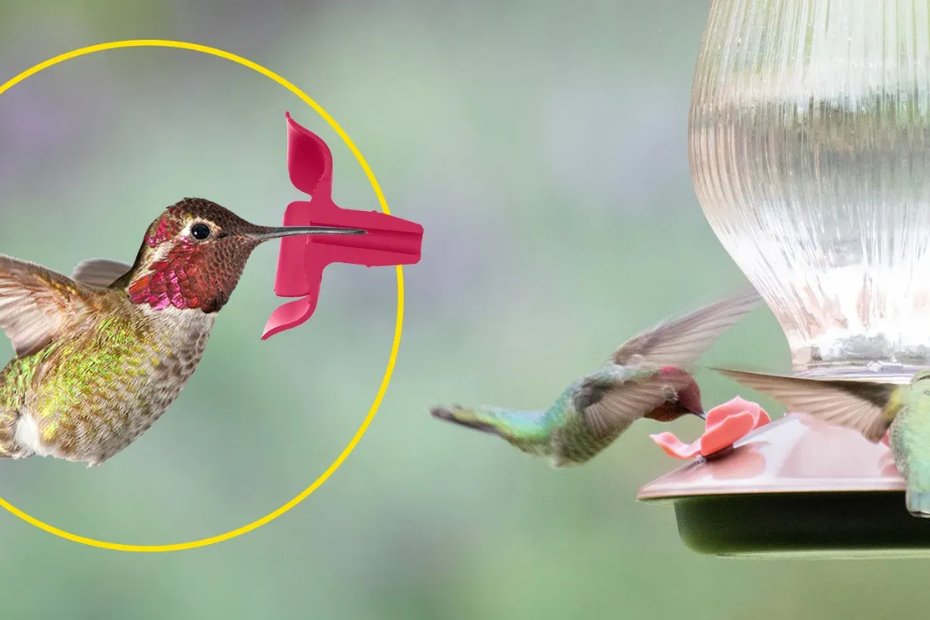Hummingbirds are well-known to backyard observers for their consumption of sugar water. However, what other foods do they consume? Understanding the food sources that hummingbirds prefer can assist in the design of an appealing backyard buffet that will satisfy the nutritional requirements of these diminutive birds.
Hummingbird Nectar
The most prevalent and widespread source of hummingbird sustenance is nectar, which can be obtained from suitable flowers or sugar water solutions. The substantial quantity of sucrose in nectar provides hummingbirds with the energy they require to maintain their high metabolism, rapid flight, and energetic lifestyles.
The nectar, which is liquid, also provides the birds with the water they require, and hummingbirds do not typically consume water from other sources. Nevertheless, nectar is insufficient to satisfy the protein, amino acid, and vitamin and mineral requirements of hummingbirds, necessitating that they consume additional foods to maintain a nutritious and properly balanced diet.
A precise protocol must be followed in order to create hummingbird nectar. Combine 1 cup of refined white sugar with 4 cups of water until the sugar dissolves. Refrain from incorporating any dyes or other additives into the mixture. Any surplus sugar water can be stored in the refrigerator for future use in the feeder.
Hummingbird Diet
In order to obtain sufficient nutrition, hummingbirds consume a diverse array of other substances in addition to nectar.
Insects
Hummingbirds depend on spiders, insect eggs, larvae, and small insects as their primary dietary sources. Insects are essential nutritional components, particularly for swiftly growing hatchlings, as they provide the fat, protein, and salts that birds are unable to obtain from nectar.
Hummingbirds have the ability to pursue insects in a variety of ways, such as by gleaning or picking them from bark, flowers, or leaves, hawking them in midair, or plucking them from spider webs or sticky sap.
In order to consume the necessary quantity of protein for a nutritious diet, an adult hummingbird must consume several dozen invertebrates each day. Nevertheless, they will consume an even greater quantity if they are required to regurgitate this nutritious food to ravenous hatchlings or if they are in the midst of a lengthy migration.
Sap
Hummingbirds will consume tree sap from wells excavated by woodpeckers when nectar is in short supply. Although the sap from trees is not as delicious as floral nectar, it still serves as a sufficient source of sucrose to meet the energy requirements of hummingbirds. The birds may select insects from the sticky residue, but sap that has trickled down and hardened on the tree trunk cannot be consumed.
Pollen
Hummingbirds do not actively consume pollen; however, they can accumulate a significant amount of pollen on their tongues and bills when they consume nectar from flowers. However, a portion of that pollen is ingested, and it can serve as a minor protein source, despite not being directly consumed. Nevertheless, less than 10% of the pollen that is ingested is actually metabolized.3 This demonstrates that, although viable, this is not a frequently consumed food source by hummingbirds.
Ashes and Sand
A few hummingbirds have been observed to consume ashes and sediment in small quantities. These substances can be a valuable source of essential minerals and salts; however, a hummingbird’s dietary requirements are not met by a significant amount of intake.
It is also conceivable that the birds were selecting invertebrates from the material, rather than consuming the ashes or sand. More detailed observation and research are required to ascertain the potential importance of this sustenance source for hummingbirds.
Fruit
Hummingbirds may be attracted to specific mature or juicy fruits. Hummingbirds have been observed to steal juices from berries, apples, pears, and oranges when they are peeled, cut open, or have their interior exposed.
Food Attraction for Hummingbirds
Determining the diet of hummingbirds will assist you in the establishment of a backyard feeding station that will satisfy their hunger. Consider the following when selecting the appropriate sustenance to attract hummingbirds:
- Honeysuckle and coral bells are examples of native flowers and flowering shrubs and trees that generate nectar-rich blooms. The most birds will be attracted to red, tubular flowers. To ensure an adequate nectar supply for months, select hummingbird flowers that blossom throughout the season. Take into account the removal of flowers that are unappealing to hummingbirds and the replacement of them with blossoms that produce more nectar.
- Do not disturb the insects by knocking down webs or spraying for insects or spiders in the garden or around your residence. Instead, depend on hummingbirds and other insect-eating animals to provide natural pest control.
- Fill hummingbird feeders with a suitable sugar solution to replicate the natural nectar of hummingbirds. Hummingbirds are attracted to red feeders, and a hummingbird nectar formula that consists of four parts water and one part sugar is the most suitable for achieving the same sucrose levels as the most popular flowers. Avoid the use of honey, molasses, citrus juice, or artificial sweeteners to create hummingbird nectar, as none of these substances are suitable for the birds and some may be harmful.
Ensure that hummingbirds have access to adjacent perches in order to protect their preferred feeding areas. Numerous hummingbirds are exceedingly territorial, and they will employ a perch as a strategic observation point for potential intruders. They will remain in the vicinity and feed more readily if they are at ease in the environment.
Although hummingbirds are frequent visitors to nectar feeders during the summer, they consume a variety of other foods. In the same way that a well-designed backyard feeding station will offer a variety of birdseed and other appropriate foods, the provision of a variety of hummingbird foods guarantees that these stunning birds never go famished.

